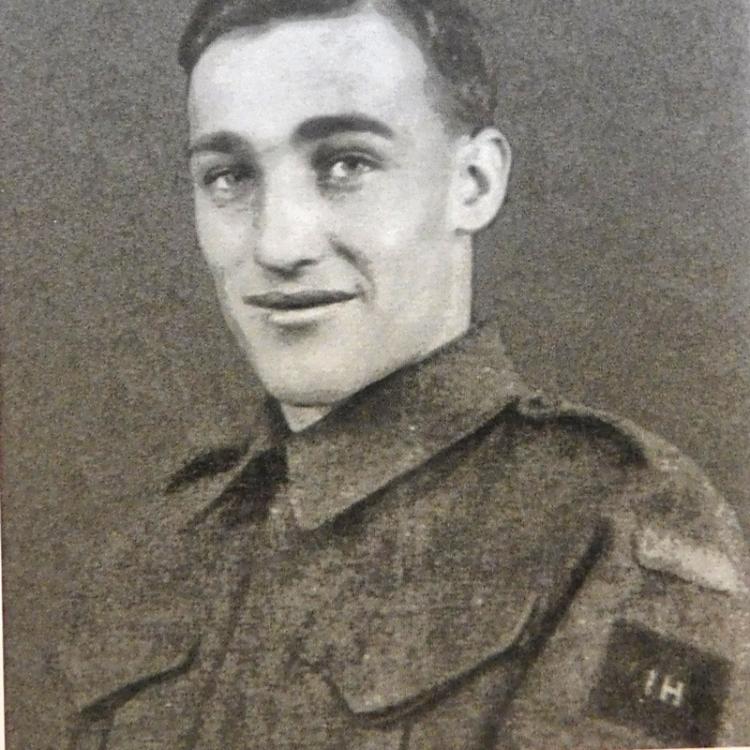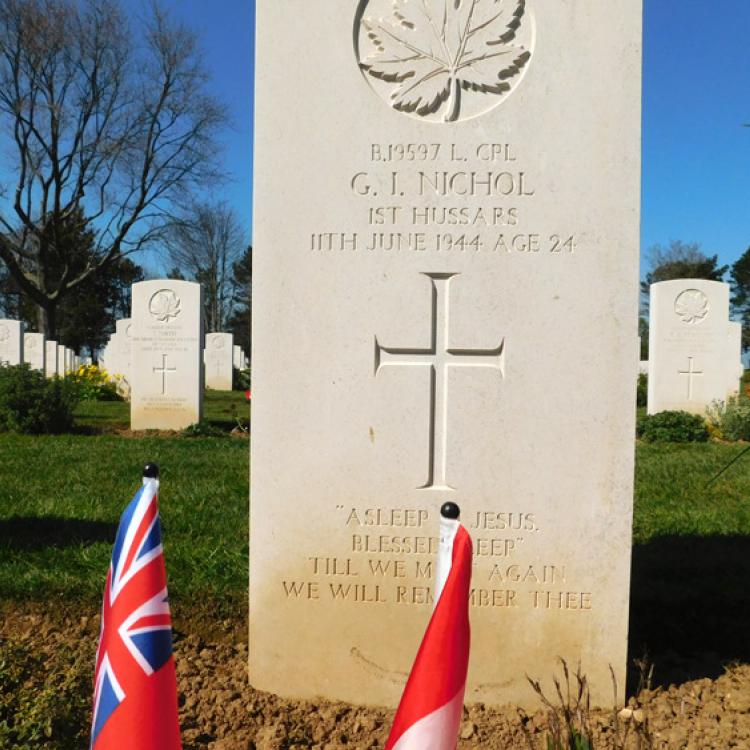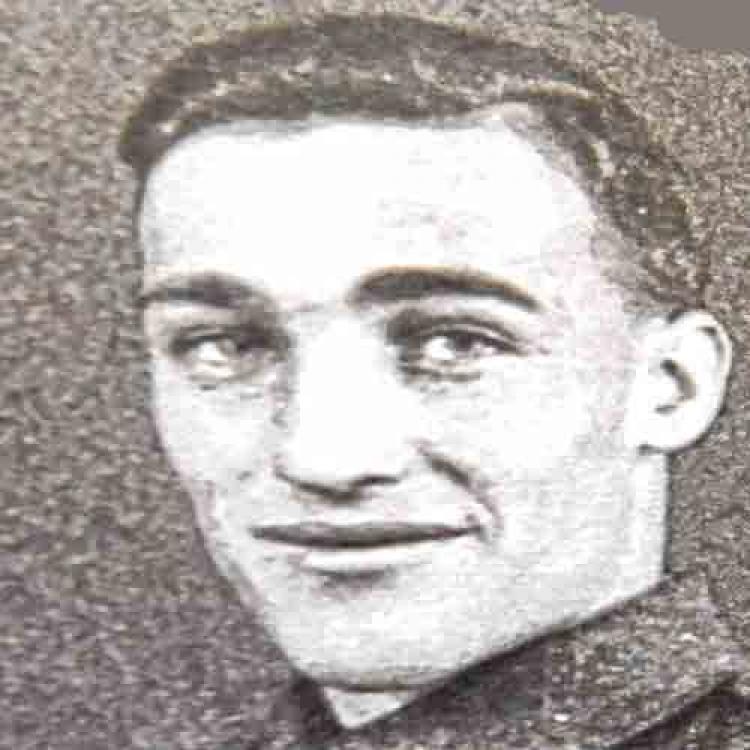NICHOL, Gordon Ivan
NAME NICHOL Gordon Ivan
RANK Lance Corporal Canadian Army
REGIMENT 1st Hussars - “B” Squadron
“today not tomorrow”
Royal Canadian Armoured Corp
1st Canadian Army - 2nd Canadian Armoured Division
6th Armoured Regiment.
AGE 24 June 11, 1944 B 19597
CEMETERY Beny-Sur-Mer Canadian War Cemetery,
Reviers - Calvados
France
VI H 14
MOTHER Mrs. Pearl Nichol - London
• Gordon was born in Bluevale on December 25, 1919. He took his schooling in Brussels after he and his
family moved there. He joined the Militia Reserve and was part of the Huron and Middlesex Regiment in
1940. He enlisted into the Canadian Army in Toronto on June 10, 1941.
• He was with the 1st Hussars since his enlistment.
• Gordon was a motor mechanic by trade.
• He left Canada for overseas on November 9, 1941.
• The Regiment was at Camille in France on June 11th and this day was cloudy and cool.
• At 04:00 hours the 1st Hussars were told that they had 24 hours to prepare for an attack. Then at 08:00 those
orders were cancelled and they were told they had 5 hours to prepare for an attack that would take place at
13:00 hours that afternoon.
• “B” Squadron was to advance and then seize Les Mesnil Patry.
• “C” Squadron was to advance and seize the high ground at Cheux on the right flank and to support with
covering fire.
• There was no time at all to brief anyone about what their tasks were.
• The upcoming fight would take place in the Mue Valley and here the Germans would use the wooded and
deep valley to their advantage.
• “B” Squadron then found that they would have to pass through Noorey-en-Besin and that the Canadian
infantry had laid mines down both sides of the road and that there was no time to lift the mines.
• At 14:20 hours “B” Squadron moved forward followed by “C & A” Squadrons as “B” Squadron crossed the
start line and started to advance on Les Mesnil Patry. Then when they were between the two towns in level
grain fields, they were hit by enemy mortar and machine gun fire and the tanks proceeded to mop up these
enemy positions.
• “C” Squadron then passed through Noorey and was at this point to the right of “B” Squadron. “B & C”
Squadrons both ran into very heavy enemy infantry and they were expending their ammunition on the
Germans with devastating results.
• “A” Squadron advanced through Noorey-en-Besin and then “B” Squadron radioed that they had reached
their objective.
• Suddenly both “B & C” Squadrons reported enemy anti-tank guns and tanks firing on their positions and
Brigade ordered no return fire as they were friendlies. Both “B & C” Squadron were flying their recognition
flags but the fire was increasing. Then contact was lost with “B” Squadron. “C” Squadron began to return
fire.
312
• The Germans had now begun to outflank and were mortaring and shelling “A” Squadron in
Noorey with accuracy.
• Brigade then ordered all Squadrons and Infantry back to the railway line between Bayeaux and Caen in
front of Bretteville. “A” Squadron took to high ground to cover the Infantry but “B” Squadron did not hear
this order and continued to fight. They had run into a ring of Panzers and anti-tank guns who were
concealed and held their fire until “B” Squadron was well within range. Those men from “B” Squadron who
were still alive after a few minutes left their tanks and went to the ground which was thick with enemy
infantry. “B” Squadron had been annihilated with the loss of 59 men killed and 21 wounded and only two of
their tanks remained.
• On this day the 1st Hussars suffered heavily but the Germans had suffered more. Between “B & C”
Squadron they had lost 37 tanks and 13 were damaged but repairable and only 2 of their tanks returned with
their crews intact.
• Some of the tanks who made it back to the start line could still fight and these were used to make a
roadblock as cover for the Canadian infantry.
• During this battle the Germans lost 14 tanks and 2,400 of their infantry.
• Many of the members of the 1st Hussars who had lost their tanks fought side by side with our Canadian
Infantry.
• On this day Lance Corporal Nichol had been assigned to “B’ Squadron and he gave his life in battle.
313




